After 75 years, is now the time to buy a Citroën 2CV?
In England, we called it the Tin Snail. The Dutch likened it to an Ugly Duckling. At home in France, it was known as an Umbrella on Wheels.
We’re talking of course about the Citroën 2CV, which celebrates its 75th anniversary this month. While hardly flattering, these tongue-in-cheek monikers do give an idea of the fondness that the car cultivated around the world during its incredible 42-year run.
The 2CV mobilized a postwar population in France and beyond, spawned numerous versions, both practical and peculiar, and cemented Citroën’s reputation for innovation.
Today, the Deux Cheveux is an affordable collectible that can only continue to appreciate. But how did it all begin?
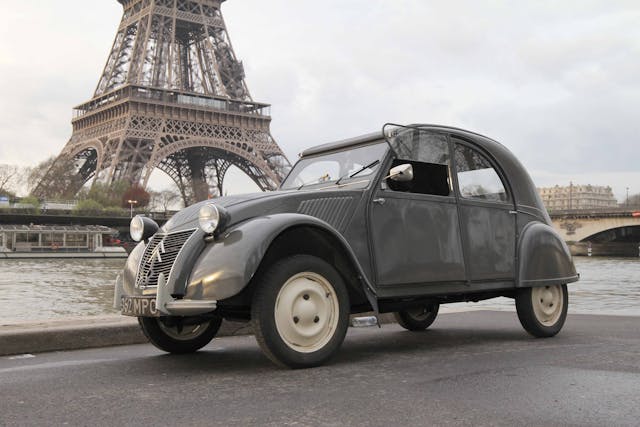
Citroën officially unveiled the 2CV—named for the French tax classification it met—in 1948 at the Mondial de l’Automobile in Paris, but the car was already almost a decade old by the time it finally made it to market. Design boss Pierre-Jules Boulanger had built several working prototypes of his TPV Très Petite Voiture (Very Little Car) before Germany invaded France in 1940. Determined that the Nazis wouldn’t get their hands on them, he hid them behind fake walls in the factory or in local haylofts where they remained until the end of the war.
The brief for what would become the 2CV was extremely simple. It had to be able to transport four passengers and up to 50 kg (110 lbs) of produce at up to 60 km/h (37 mph) across the worst roads and use only three liters of fuel every 100 km – an equivalent of 80 mpg US. Essentially, its directive was to be more reliable and cheaper to run than a horse and cart.
Meeting Boulanger’s expectations was no mean feat and required some very creative thinking.
Citroën engineers had been working with exotic materials such as magnesium and aluminum in their prototypes, but post-war reality meant that cheaper steel would take their place for the car’s simple ladder chassis and thin “upside down pram” bodywork. A water-cooled two-cylinder engine was also replaced with a Walter Becchia-designed 375-cc air cooled unit mated to a four-speed transmission. Boulanger was in favor of a three-speed for simplicity, but an extra overdrive gear would deliver the necessary fuel efficiency.
Boulanger had also specified that the car should be able to drive across a freshly-plowed field with a basket of eggs on the back seat without cracking any of them. That required some serious suspension ingenuity.
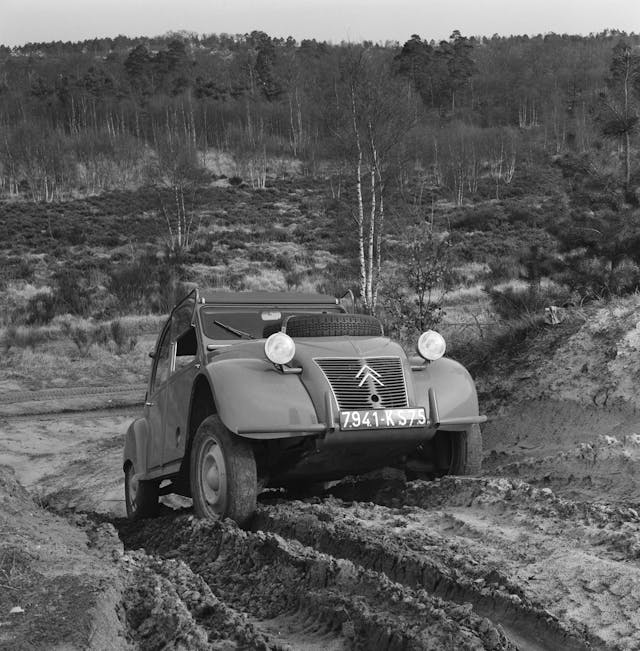
A torsion bar system linked front to rear provided a form of self-levelling, and also effectively lengthened the wheelbase on one side as the car negotiated a corner. There’s body roll aplenty, but the tires’ tiny contact patch remains in touch with the road.
A cost-saving effort meant the windscreen wipers were driven from the same cable as the speedometer and as a result, they only worked when the car was moving. Only the front windows opened, and they did so on a hinge rather than rolling down. The canvas roof could roll all the way back to aid cabin cooling, though. The rear bench seat could be removed to carry larger loads or serve as a picnic bench for a long lunch of baguettes, fromage and vin rouge.

Driving a 2CV is also an experience not to be hurried (despite what you may have seen in For Your Eyes Only), as even the most potent 602 cc versions produce just 33 hp. It’s wonderfully immersive, however, with the car’s eccentric simplicity fostering a joyful physical connection with the driver.
Firing up the twin cylinder engine immediately sends a lively chatter through the chassis, up the seat posts and into your derrière. The whole car thrums.

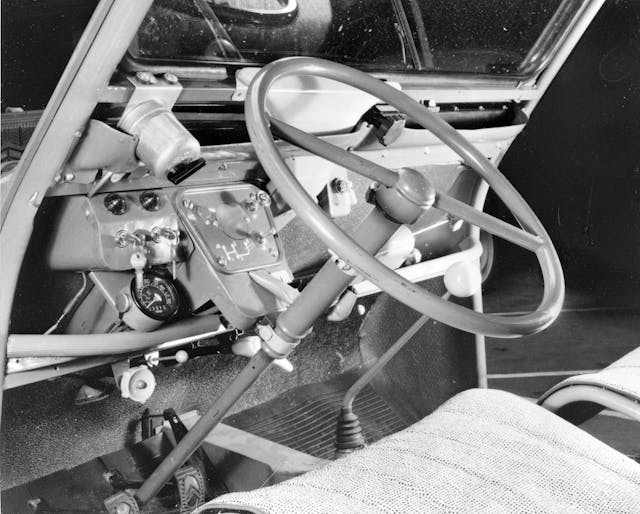
The dash-mounted umbrella-handle gear selector is far easier than it looks to get used to, with a dog-leg, low-ratio first gear and the remaining three forward gears in a standard H pattern. There’s quite a long throw to it, but also a mechanical satisfaction to gear selection that could almost be compared to an open-gated Italian ‘box.
The large, thin steering wheel requires a bit more effort than you might expect given the skinny tires, but once you’re rolling it lightens up to the point of being rather vague at higher speeds. Going downhill with a stiff breeze following, I’ve done an indicated 80 mph in a 2CV, but it’s much happier at the 40-50mph mark.
Although accompanied by an assortment squeaks, the suspension does a fine job of cushioning the ride, albeit with alarming roll angles through corners. Think of it as the opposite of a motorcycle—embrace the lean and a 2CV can actually take bends at considerable speed—much to the surprise of the drivers that were glued to your back bumper on the preceding straights.
A 2CV is best enjoyed on a sunny day or starlit night, with the roof folded back and the side windows open as you soak up its Gallic charm.
But which 2CV, or 2CV derivative is for you? In total more than nine million were made between 1948 and 1990, so you do have a few options. Almost four million of those were sedans, but 1.3 million Fourgenette vans, 1.8 million Amis and 1.4 million of the more upmarket Dyanes were also built. Then there were a quarter million Acadiane vans, a further 145,000 Meharis and nearly 700 twin-engined Sahara 4x4s. The 2CV and its assorted spin-offs were assembled as far afield as Argentina, Uruguay, Chile, Yugoslavia, Germany, Ivory Coast, Senegal, Indonesia and Iran.
This quirky car of the world has been gradually appreciating, but yet to really rocket in value. A #1 concours edition car from 1949 is worth $51,800 according to Hagerty Valuations, while you might find a still driveable car from the same year for as little as $11,000– less for later models. Even the rare Sahara, which would set you back $157,000 for a Condition 1 example has only seen a single-digit rise in the last year.
As it passes 75 years, now might just be the time to go for a little escargot.
***
Check out the Hagerty Media homepage so you don’t miss a single story, or better yet, bookmark it. To get our best stories delivered right to your inbox, subscribe to our newsletters.
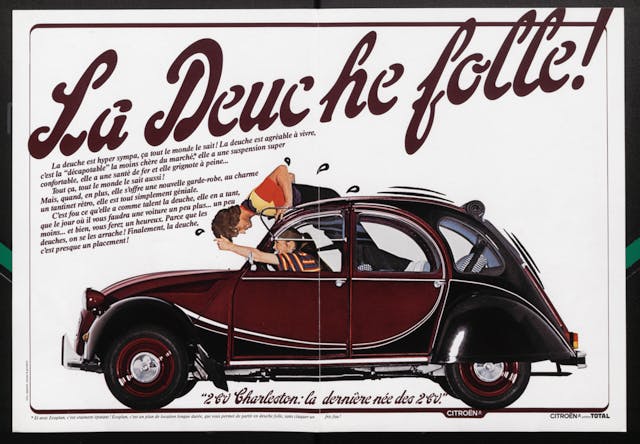
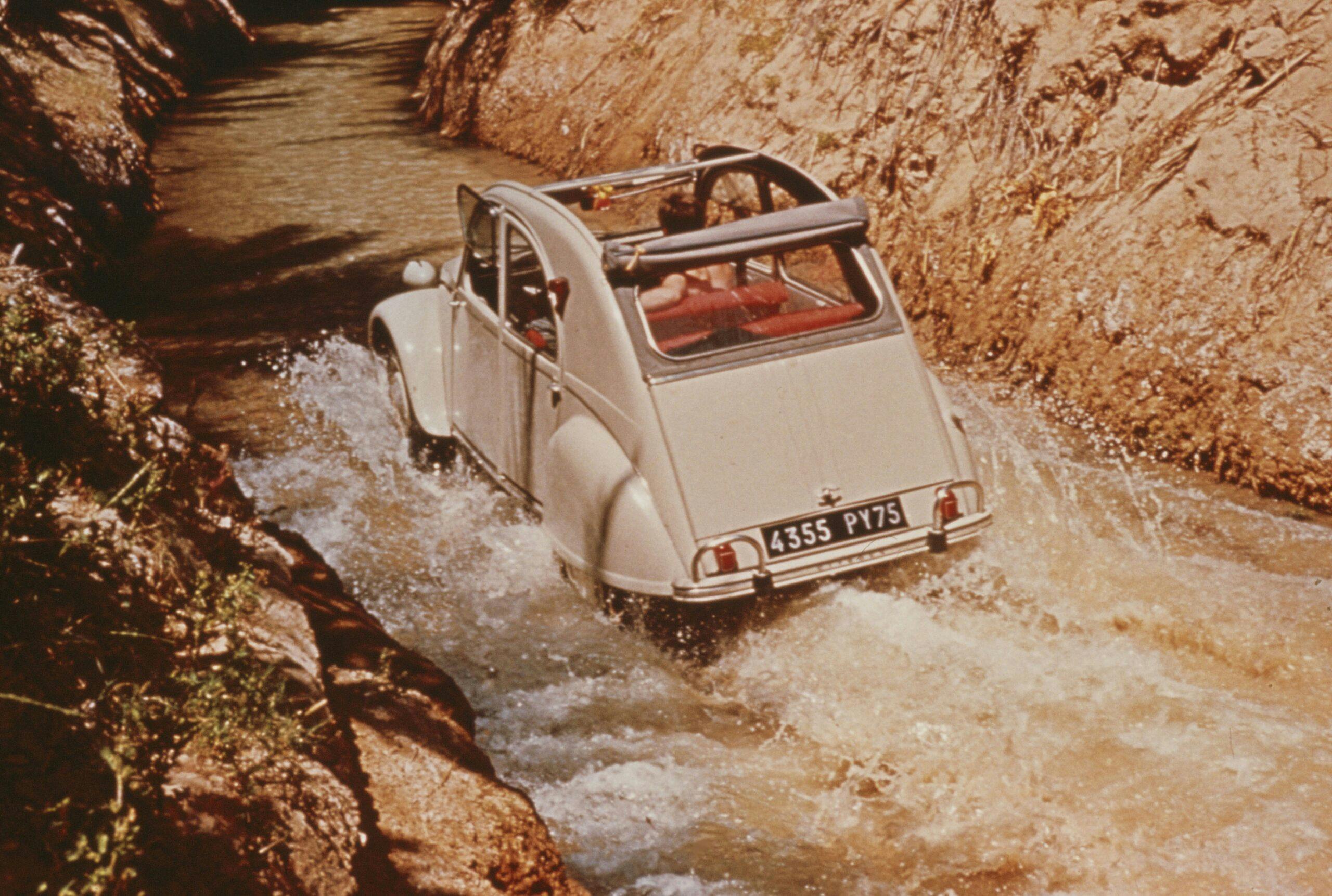
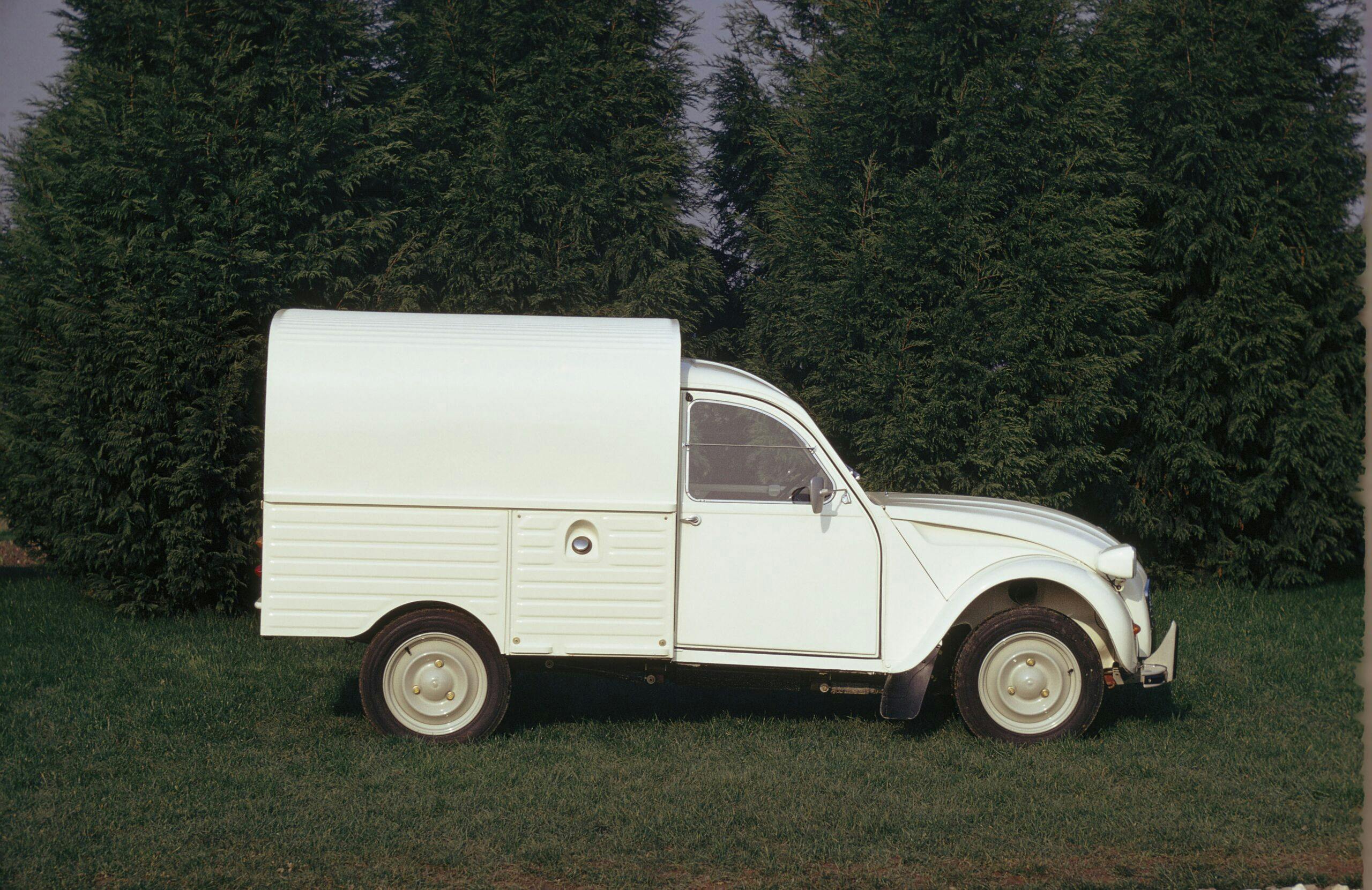


My grand pappy Maverick always said never drive cheap French cars even if your feet hurt.
As the CME officer in “Trading Places” joked at the restaurant, “Look at that ‘S’ car go!”
It’s a quirky car. Not my kind of car but still a fun one.
Its a triumph of minimalism , a blast to drive, takes rough stuff with ease and an easy car to love.
We won’t be parting with ours for a long long time!
You have to drive one to understand the fun loving character of a 2CV! I always say that “No car tries harder than a 2CV!” So simple and fun that they can turn you into a minimalist!
We always wanted to do a Subaru transplant in a 2CV. Would have been fun!
And we almost had a customer talked into doing a full GTR power train transplant in a Traction Avant. That was going to be epic!
The Lane Museum in Nashville, Tn has one with 2 front ends. It was a fire chief car in it’s 1st life & could be driven in either direction without having to turn around. This was for use on very narrow streets in cities while fighting fires the car wouldn’t get trapped & have to be backed out
I own one. A ’67 2CV6.
It sits between cars that cost significantly more. Would lose more horsepower by unplugging a single spark plug wire. Are far more “desirable.”
Ask me which one gets driven the most over the summer? Starts the most conversations? The one I plan roadtrips to drive? Yeah. The 2CV.
It’s a ridiculous car. Truly. But it’s incredibly practical. Insanely well engineered. Reliable. And a blast to drive.
Tearing down a Porsche 3.2 that’s bound for my 911, I keep asking why Porsche couldn’t build a motor as leak free, durable, and well engineered as my 602…
In a car that costs multiples more new or now.
It’s a brilliant car. Really.